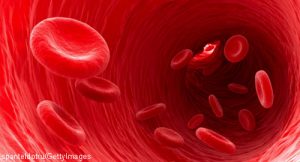 PHILADELPHIA—Ever since the seminal work of C. Lockard Conley, MD, in 1952 of the discovery of the lupus anticoagulant, antiphospholipid syndrome (APS) has been of great interest to rheumatologists, hematologists and many others. At ACR Convergence 2022, the session titled Draft ACR/EULAR Antiphospholipid Syndrome Classification Criteria sought to summarize the rigorous process that went into the creation of these criteria and describe the novel aspects of this project.
PHILADELPHIA—Ever since the seminal work of C. Lockard Conley, MD, in 1952 of the discovery of the lupus anticoagulant, antiphospholipid syndrome (APS) has been of great interest to rheumatologists, hematologists and many others. At ACR Convergence 2022, the session titled Draft ACR/EULAR Antiphospholipid Syndrome Classification Criteria sought to summarize the rigorous process that went into the creation of these criteria and describe the novel aspects of this project.
The first speaker in the session was Medha Barbhaiya, MD, MPH, assistant attending physician, Hospital for Special Surgery, New York City, and assistant professor of medicine and population health sciences, Weill Cornell Medicine, New York City. Dr. Barbhaiya began her presentation by noting the distinction between classification and diagnostic criteria, explaining that the goal of classification criteria is to create a well-defined study sample representative of the majority of patients with a particular condition, and the goal of diagnostic criteria is to identify all patients with a condition, including those with unusual presentations.
Need for New Criteria
She explained that the currently used classification criteria for APS are the Revised Sapporo APS criteria, which rely on a combination of clinical and laboratory criteria to identify the disease. Some of the limitations of these criteria include: 1) a lack of risk stratification by APS lab profile, 2) unclear definition of antiphospholipid positivity, 3) no representation of heterogeneous presentations, such as heart valve disease or thrombocytopenia, 4) lack of stratification of thrombotic events by provoking risk factors, and 5) an outdated definition of pregnancy morbidity.
Given these limitations, the investigators set to work on new criteria with generation of a comprehensive list of items related to APS and subsequent removal from this list of items with low sensitivity or specificity, poor reliability or insufficient feasibility. The subsequent steps were to further reduce candidate criteria, agree on precise definitions, determine the relative weight of each criterion using a derivation cohort and identify a threshold for a high likelihood of APS.
Innovations
The second presentation in the session, by Stephane Zuily, MD, PhD, full professor of medicine, Lorraine University, Nancy, France, was focused on the novel aspects of these new criteria. Dr. Zuily discussed how a patient who has suffered venous thromboembolism (VTE) without risk factors for VTE has a greater chance of having APS than a patient with the same type of VTE but one or multiple pre-existing VTE risk factors (for instance, an active malignancy).
With this in mind, the new APS criteria create four macrovascular domains: 1) VTE with high VTE risk profile, 2) VTE without high VTE risk profile, 3) arterial thrombosis with high cardiovascular disease (CVD) risk profile, and 4) arterial thrombosis without high CVD risk profile. Dr. Zuily provided examples of major VTE risk factors, such as major trauma or high risk surgery, as well as minor risk factors, including the presence of a central venous catheter or hormone replacement therapy. He also defined high CVD risk factors, such as severe arterial hypertension and chronic kidney disease, in addition to moderate CVD risk factors, including active current tobacco smoking and obesity.
Dr. Zuily also discussed how the new criteria describe microvascular domains of APS in much greater detail than the Revised Sapporo criteria. For instance, the microvascular domains include livedo racemosa, livedoid vasculopathy, acute or chronic antiphospholipid nephropathy and pulmonary hemorrhage. For each of these findings, a distinction is made between suspected and established microvascular disease; for example, livedoid vasculopathy based on physical exam alone would be suspected disease, whereas exam combined with pathology findings of this entity would be established disease.
Several other innovations from the new APS criteria were discussed as well. Dr. Zuily pointed out that pregnancy loss at less than 10 weeks is relatively common and not specific for APS, but is more frequently seen in APS when it is associated with severe pre-eclampsia or placental insufficiency. Thus, the new classification criteria obstetric domain includes pre-eclampsia and/or placental insufficiency with severe features at less than 34 weeks’ gestation with or without fetal death.
Regarding additional clinical domains, cardiac valve pathology, such as thickening or vegetations, and thrombocytopenia have been added as well, given that these can all be features of APS. For the laboratory domains, new thresholds have been designated for anticardiolipin and beta-2 glycoprotein I antibodies depending on whether it is the IgG or IgM antibody being identified, and, for the lupus anticoagulant, a single (one-time) positive test is included as a criterion as it may be relevant in cases where repeat testing is not possible (i.e., the patient is on anticoagulation).
Caveats
The final speaker in the session, Doruk Erkan, MD, MPH, attending physician, Hospital for Special Surgery, New York City, and professor of medicine, Weill Cornell Medicine, New York City, presented the draft criteria in full and made several editorial comments. The first comment was that the entry criteria require at least one documented clinical criterion plus a positive antiphospholipid test, such as lupus anticoagulant or moderate to high titers of anticardiolipin or beta-2 glycoprotein I IgG or IgM within three years of the clinical criterion.
Dr. Erkan did note that a clinical criterion should not be counted if an equally or more likely explanation than APS could be the cause. Dr. Erkan proceeded to go through the weighting of each criterion and the way in which a final score can be calculated, and he also discussed that the new criteria have higher specificity but slightly lower sensitivity as compared to the Revised Sapporo criteria.
Advantages of the New Criteria
Several strengths of the new criteria were summarized toward the end of the session. First, it was noted that the clinical and laboratory criteria are carefully defined, thereby improving reliability and precision. Second, more independent domains with differential weighting now exist, allowing for a more nuanced view of the clinical picture. Third, the validation of the criteria has been based on two international cohorts, with both demonstrating high specificity as compared to the Revised Sapporo criteria. Dr. Erkan did admit that the cohorts do not represent all subpopulations of patients and that no definite gold standard exists for validating APS criteria, but even with these limitations, the criteria are likely to still be of great help to researchers.
In Sum
The session was presented extremely well and, although these are draft criteria and still undergoing ACR, EULAR and journal peer review, the talk generated excitement. Indeed, the understanding of APS is ever evolving, and this initiative from ACR and EULAR represents a step in the right direction.
Jason Liebowitz, MD, completed his fellowship in rheumatology at Johns Hopkins University, Baltimore, where he also earned his medical degree. He is currently in practice with Skylands Medical Group, N.J.



